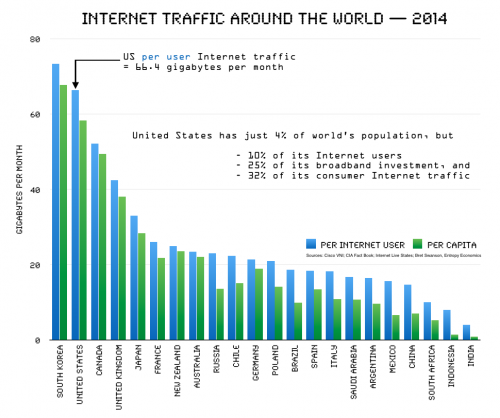Is the U.S. broadband market healthy or not? This question is central to the efforts to change the way we regulate the Internet. In a short new paper from the American Enterprise Institute, we look at a simple way to gauge whether the U.S. has in fact fallen behind other nations in coverage, speed, and price . . . and whether consumers enjoy access to content. Here’s a summary:
- Internet traffic volume is an important indicator of broadband health, as it encapsulates and distills the most important broadband factors, such as access, coverage, speed, price, and content availability.
- US Internet traffic — a measure of the nation’s “digital output” — is two to three times higher than most advanced nations, and the United States generates more Internet traffic per capita and per Internet user than any major nation except for South Korea.
- The US model of broadband investment and innovation — which operates in an environment that is largely free from government interference — has been a dramatic success.
- Overturning this successful policy by imposing heavy regulation on the Internet puts one of America’s most vital industries at risk.


